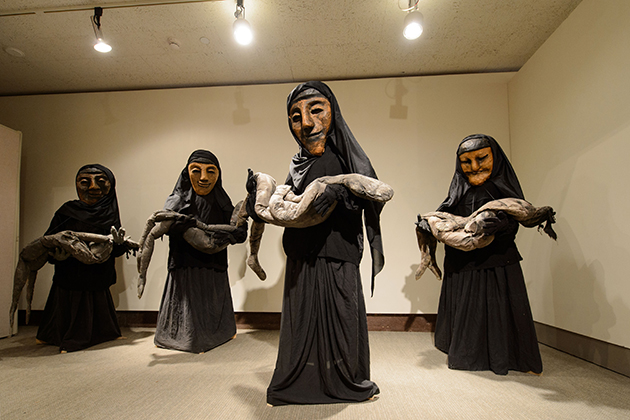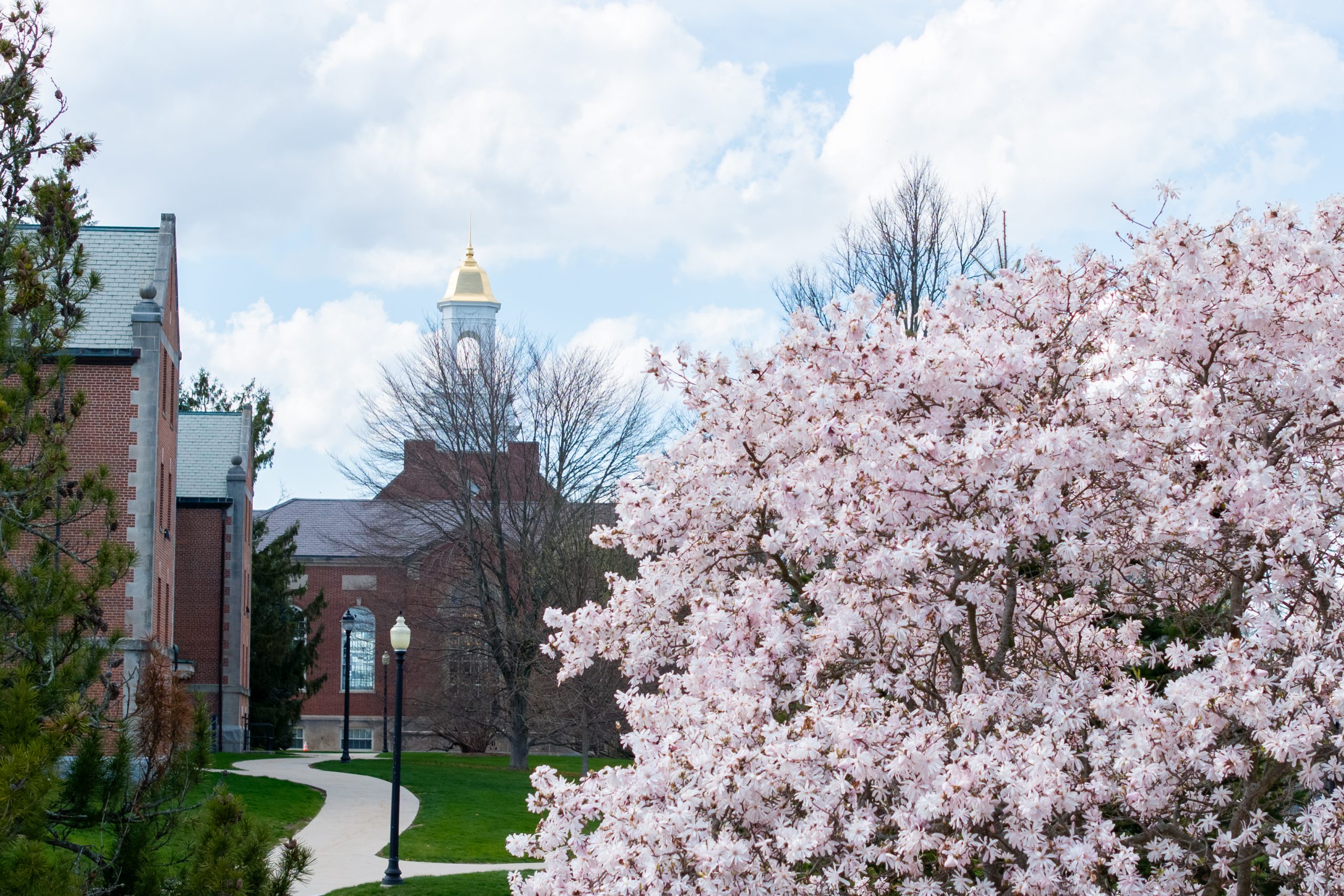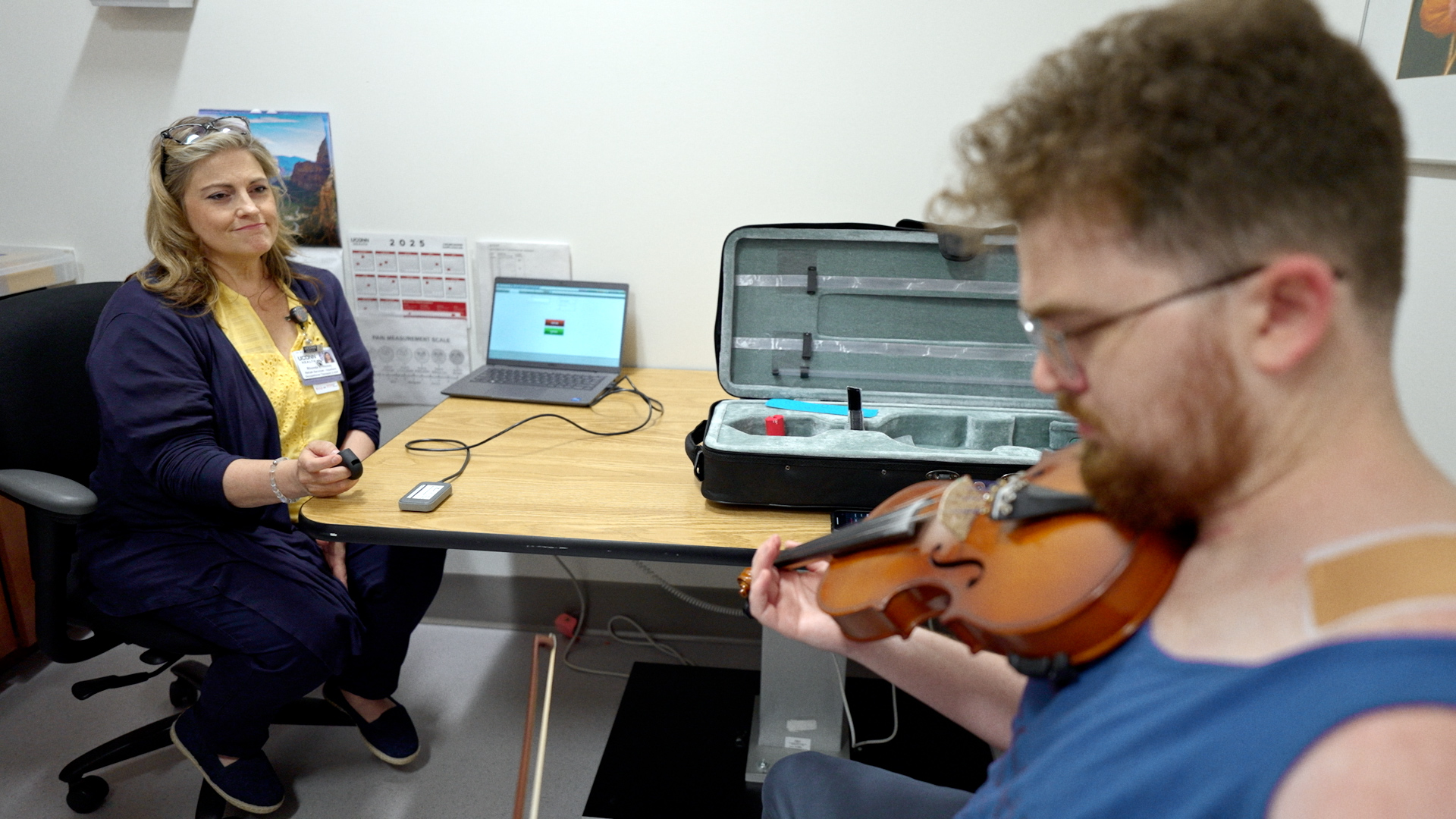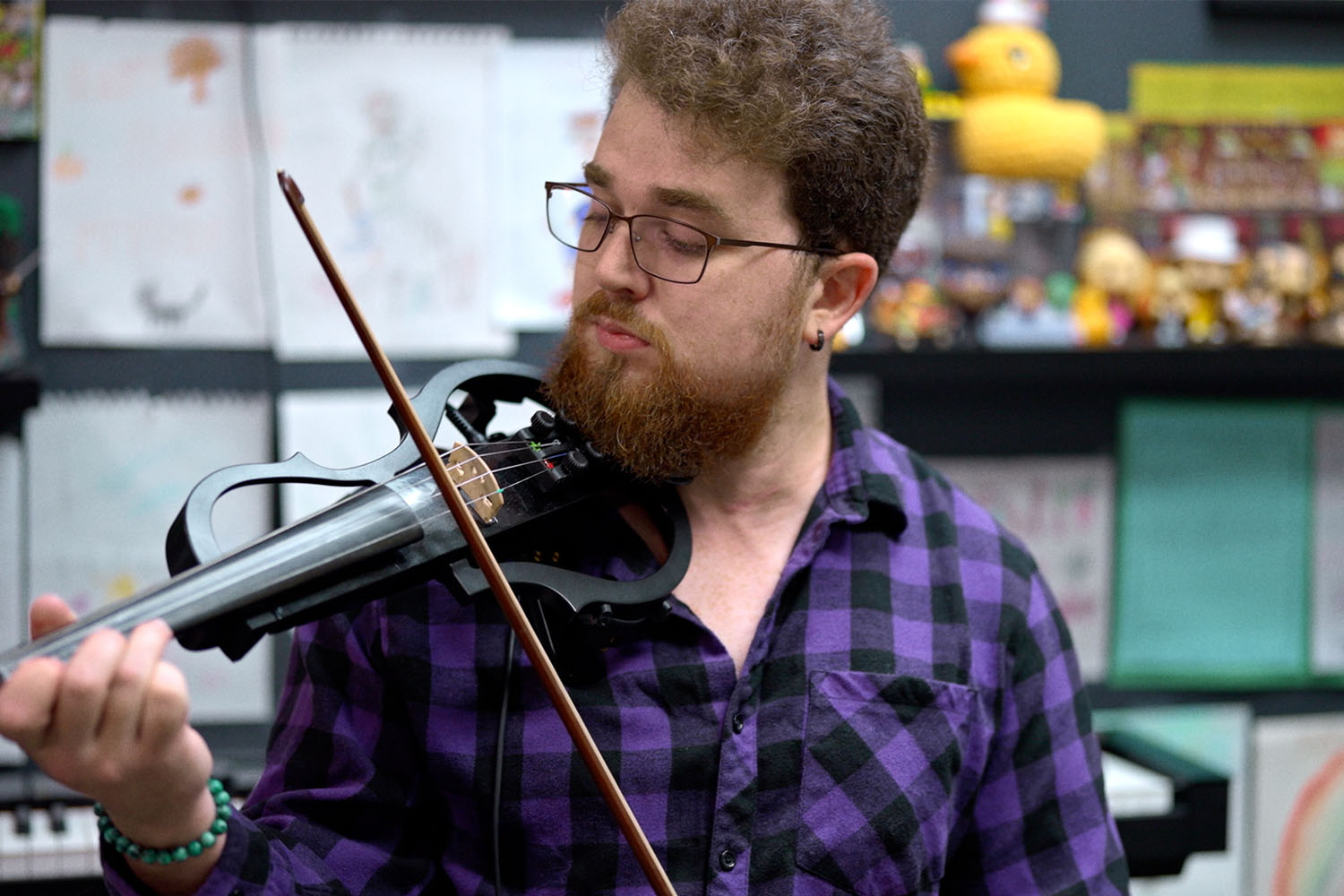
Taking to the streets as part of the earliest demonstrations against the United States’ involvement in Southeast Asia, Bread & Puppet Theater would become a notable presence in the growing protests against the Vietnam War and supporting activism for social and political issues.
Some of the most memorable street puppets created by the company led by Peter Schumann are part of “Speak Up! Speak Out! Bread & Puppet Theater,” an exhibition in collaboration with the Ballard Institute and Museum of Puppetry now at the William Benton Museum of Art and continuing through Oct. 11.
The puppets created by the sculptor, choreographer, and baker – Schumann would distribute bread for the audience to eat while watching the performances – grew larger and larger, as the performances moved often from the stage to the streets, competing, as he says, with “the commercialism of the city.”

Through his friendship with choreographer Merce Cunningham and composer John Cage, whom he had met in his native Germany, Schumann learned in New York about The Living Theater, the innovative theater that staged poetic drama founded by Julian Beck and Judith Malina. He adopted Living Theater’s alternative approach to developing plays using puppets to explore social and political issues.
“I was lucky,” he says. “I found a bunch of crazy, dopey artist types in the streets to help me with it. There was no problem getting a team together.”
Eventually moving Bread & Puppet Theater to an old dairy farm in Vermont, Schumann had the space and resources to stage large-scale productions, and conduct puppet and theater workshops that would produce shows that would tour seasonally and attract thousands.

Among the creations on display at the Benton are puppets from “Mr. Budhoo’s Letter of Resignation from the International Monetary Fund,” a 1994 play that addressed the effects of the International Monetary Fund and World Bank policies in third world countries; the giant figure of Archbishop Oscar Romero that was the centerpiece of the 1985 production “The Nativity, Crucifixion, and Resurrection of Archbishop Oscar Romero of El Salvador” performed in front of the cathedral in Leon, Nicaragua; and “The Birdcatcher in Hell,” a 1971 adaptation of a Japanese kyogen play that reframed President Richard Nixon’s pardon of Lt. William Calley, who was sentenced to life in prison for his role in the 1968 My Lai massacre of civilians in Vietnam.

One of Schumann’s most familiar characters, Uncle Fatso, is also present, wearing a stars and stripes hat usually associated with Uncle Sam, the iconic representation of the United States. Over the years, Uncle Fatso has symbolized American presidents during protests against their policies. Schumann says the original puppet figure was created by children in East Harlem, New York City as part of a summer program.

Schumann says his more than half a century performing works based on social and political issues is rooted in what he terms “upset-ness.”
“To be upset about the situation and do something about it,” he says. “You’re surrounded by young artists who don’t know what to use their art for and who are very happy to get instruction and inspiration on how to use their art as a social tool and a political tool. We forever have floods of youngsters coming to our farm to work on issues with us. There are so many directions to go in. Sometimes we take almost fairy tale-like simple legends and we fit the political theme into that.”
“Speak Up! Speak Out! Bread & Puppet Theater,” continues at the William Benton Museum of Art through Oct. 11, with the exception of July 3-6 and Aug. 16-31, when the museum will be closed. It will be part of the 2015 National Puppet Festival that will take place at UConn Aug. 10-16. For more information go to the museum’s website.


